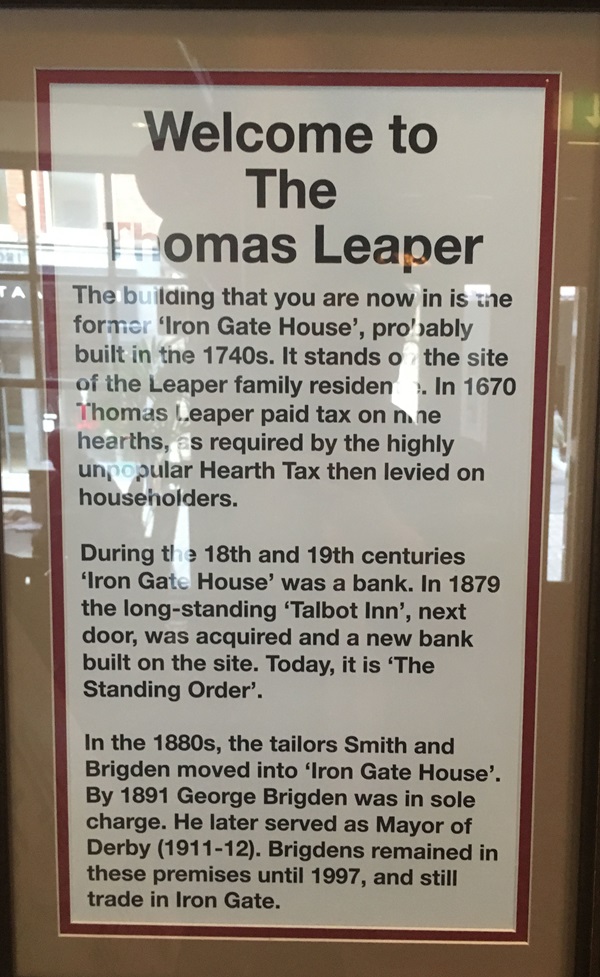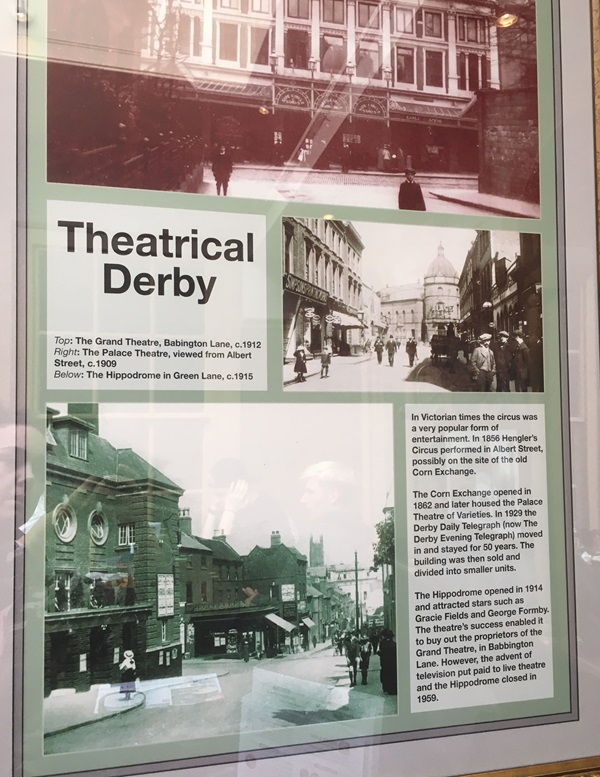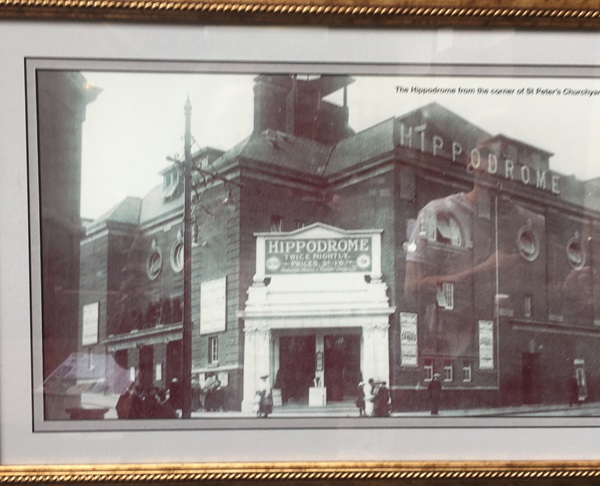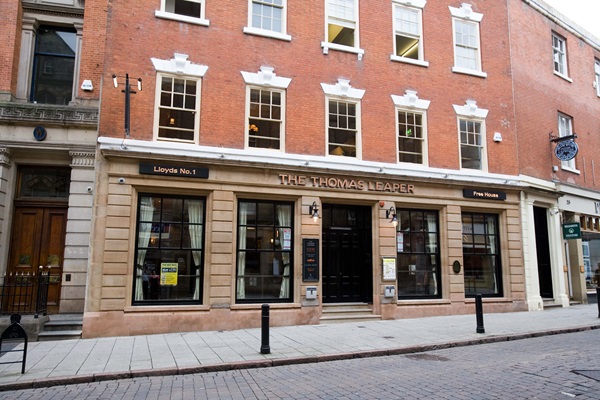This pub is closed permanently. Your nearest Wetherspoon pub: The Standing Order
A four-storey Georgian brick building, this was probably erected in the 1740s (but possibly between 1710 and 1720). Iron Gate House was built on the site of the Leaper family residence. In 1670, Thomas Leaper paid tax on nine hearths, as required by the highly unpopular hearth tax levied on householders.
Text about The Thomas Leaper.

The text reads: The building that you are now in is the former Iron Gate House, probably built in the 1740s. It stands on the site of the Leaper family residence. In 1670 Thomas Leaper paid taxes on nine hearths, as required by the highly unpopular Hearth Tax then levied on householders.
Photographs and text about theatres in Derby.

The text reads: In Victorian times the circus was a very popular form of entertainment. In 1856 Hengler’s Circus performed in Albert Street, possibly on the site of the old Corn Exchange.
The Corn Exchange opened in 1862 and later housed the Palace Theatre of Varieties. In 1929 the Derby Daily Telegraph (now The Derby Evening Telegraph) moved in and stayed for 50 years. The building was then sold and divided into smaller units.
The Hippodrome opened in 1914 and attracted stars such as Gracie Fields and George Formby. The theatre’s success enabled it to buy out the proprietors of the Grand Theatre, in Babington Lane. However, the advent of television put paid to live theatre and the Hippodrome closed in 1959.
A photograph of the Hippodrome, from the corner of St Peter’s churchyard.

External photograph of the building – main entrance.

If you have information on the history of this pub, then we’d like you to share it with us. Please e-mail all information to: pubhistories@jdwetherspoon.co.uk